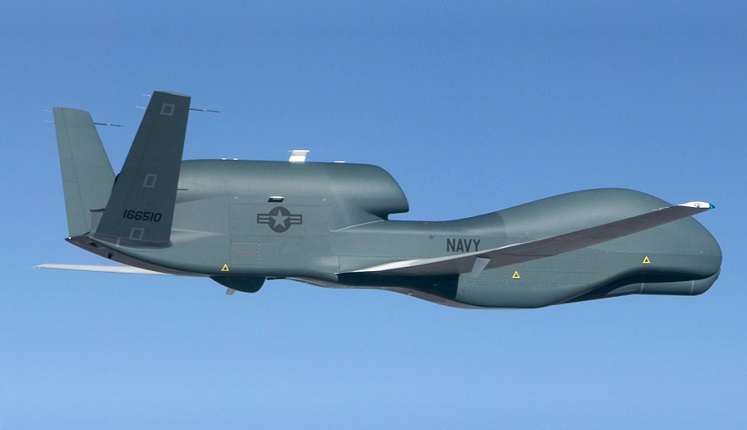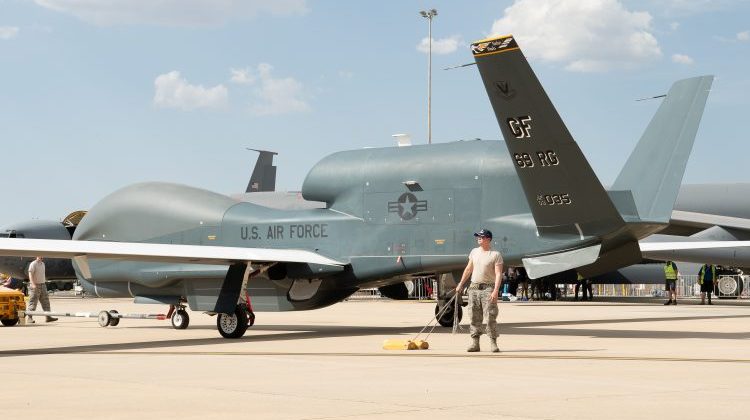
The United States Central Command (CENTCOM) says Iran has shot down a US Navy Northrop Grumman RQ-4A Block 10 Global Hawk unmanned maritime ISR air vehicle that was flying in international airspace off the Iranian coast.
CENTCOM spokesman Captain Bill Urban confirmed the incident in a statement on Thursday (US time), following earlier media reports.
“A US Navy Broad Area Maritime Surveillance (or BAMS-D) ISR aircraft was shot down by an Iranian surface-to-air missile system while operating in international airspace over the Strait of Hormuz at approximately 11.35pm GMT on June 19, 2019,” Capt Urban said.
Iran initially said it had shot down a Global Hawk in the Straits of Hormuz region after it penetrated Iranian airspace, and subsequent multiple social media reports – some claiming US DoD confirmation – said the aircraft was an MQ-4C Triton.
The larger and more advanced MQ-4C Triton was believed to have only recently achieved an early operational capability (EOC) with the US Navy, with two air vehicles due to be based on the Pacific island of Guam sometime this northern summer.
The incident comes amid rising tensions between Iran, the US, and Gulf Cooperation Council (GCC) countries in the region following the withdrawal of the US from an international nuclear weapons limitation agreement with Iran in 2018, Iran’s support of Houthi rebels in the Yemeni civil war, and the attack of two oil tankers in the Gulf of Oman late last week which the US has attributed to Iran.
CENTCOM said reports from Iran that the aircraft was over Iranian airspace were false.
“This was an unprovoked attack on a US surveillance asset in international airspace,” CENTCOM said.
The US has previously deployed United States Air Force (USAF) RQ-4A/B and EQ-4B, and US Navy RQ-4A Global Hawks to the region, and the US Navy’s RQ-4A is a modified early-build USAF Block 10 RQ-4A which features a maritime radar modes, maritime automatic identification system (AIS), and enhanced communications.
The BAMS-D aircraft have been deployed in the region almost continuously since 2009, as part of the US Navy’s BAMS-D program to develop its concepts of operation for the larger Triton.













